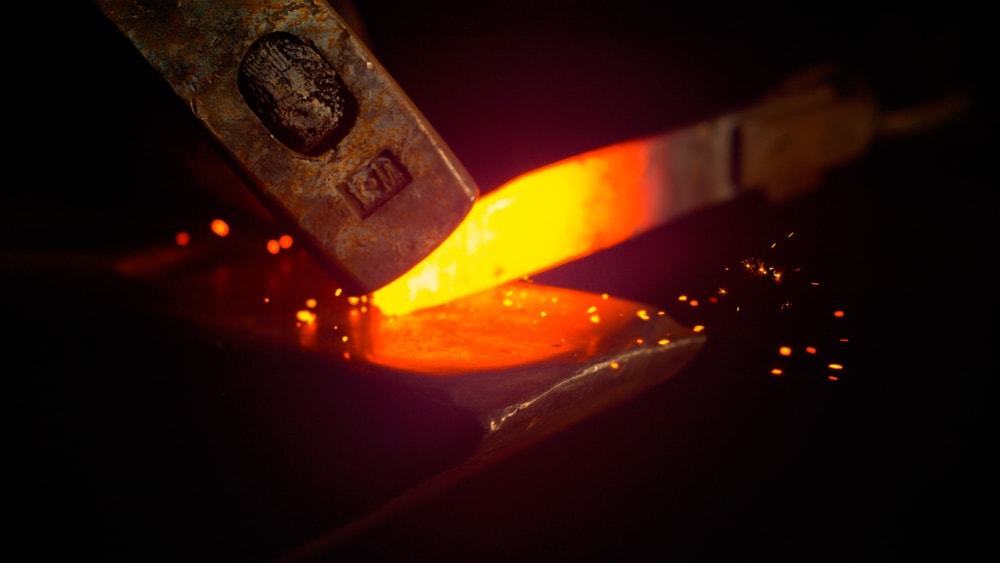Introduction
Do you want to forge a weapon from the 16th and 17th centuries that are still relevant today? Try forging a bardiche. This weapon is an innovation from the 15th century from eastern Europe, but bardiche became more relevant during the 16th and 17th centuries.
It is a weapon with a long handle and a sharp blade. It often takes the shape of an ax but has a unique head. From the historical record from the 15th century and 16th century, bardiche is a modification to the general ax. It aimed at creating a lighter weapon with similar functionality.
Forging a bardiche is not as difficult as many people take it to be. It follows a similar process of making medieval weapons. Below is a simple stepwise guide for forging this medieval weapon.
Essentials
The essential tools for forging weapons are what you need for this process. These essentials include;
- Anvil
- Forge
- Hammer
- Induction tools
- Grinder
- Sandpaper
- Polearms (for wooden bardiches)
Instructions
Think of yourself as a medieval blacksmith of the modern century. It is best to have basic blacksmithing skills and follow the steps below to make a bardiche.
STEP 1: Prepare Your Materials and Forge
Weapons have four qualities that define their quality; strength, balance, weight, and flexibility. Other features like length are dependent on individual preference. It is best to get every material ready before proceeding with other processes. Aside from the essentials above, you will also need steel, a wooden pole (for the polearm), and finishing materials.
STEP 2: Measure and Cut
Measurement and precise cut is an essential part of making a bardiche. Get a 1/4″ sheet of steel and cut out a hawk shape to form the blade and the hook. Cut out two lengthy slim triangular pieces of the same type of steel about 1/8″ thick. The vertical length is the spear’s apex to socket length, and the base is half the pole’s tip circumference. You should also measure and cut the polearms at this step.

STEP 3: Forge Weld and Hammer
It’s time to join the essential parts of the bardiche. Weld, the two pieces of metal and don’t make the mistake of closing up the drift for the pole. Hammer down the tip of the blade to form an edge similar to an ax. Do the rough shaping of the ax blade and open the unwelded part further.
STEP 4: Perfect The Blade
Once you get the rough blade shape of the bardiche, go ahead to perfect it. To avoid any mistake, start by inserting the pole and close up the socket. Ensure that the pole is firm enough to carry the weight of your bardiche.
- Hammer down the blade’s edge
- Harden and temper the blade
- Sharpen with a grinder and fine-tune the edges with sandpaper to make it as sharp as you desire
STEP 5: Finishing
The finishing of your bardiche is dependent on its use. If you intend to make it for regular use, you might not need any special finishing. Bit if the bardiche is for a show, use suitable paint to make it attractive and protect its quality.

Frequently Asked Questions
Is a Bardiche an AXE?
Bardiches are considered to be pole axes. It has a top similar to axes placed on top of a shaft. However, they serve different purposes.
Who used the Bardiche?
The Bardiche is predominantly a Slavic weapon used in Eastern Europe, Russia, and the middle east.
Where does the Bardiche come from?
The use of bardiches originated from Australia in the 14th century and Scavendia in the 15th century. It only became popular among the Russian guardsmen in the 16th century.
How big is a Bardiche?
The size and length of the bardiche are dependent on the design. The blade usually exceeds 60cm but the polearm does not exceed 1.5m.
Video:
https://www.youtube.com/watch?v=DsOhD3xxgFo
Warning and Precautions
Forging a bardiche requires proper care and precautions to avoid accidents and obtain the best possible results. Some of the essential warnings and precautions include;
- Assume every metal is hot to avoid burn.
- Use all necessary blacksmithing protective materials all through the process.
- Ensure that all tools and materials are in perfect condition before use.
- Keep all forging precautionary measures in mind all through the process.
